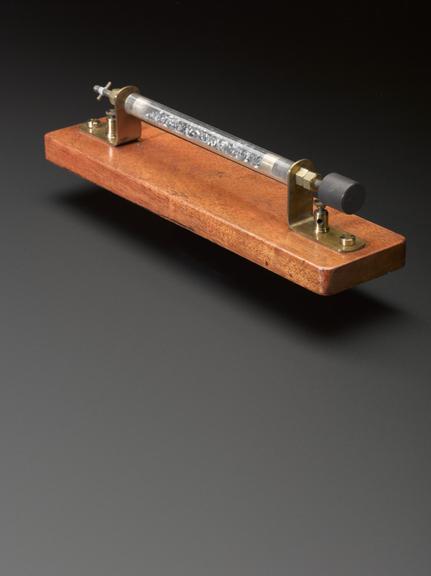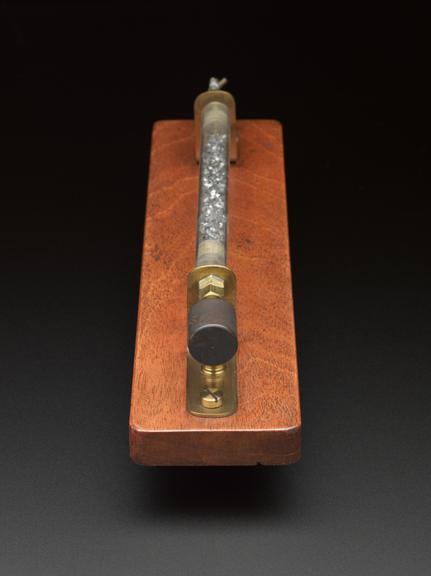
Iron borings coherer (Branly type), 1894
1894









Two iron borings coherers (Branly type), probably made by Sir Oliver Lodge, England, 1894. Used by Sir Oliver Lodge for signalling to a Thomson marine galvanometer at the British Association meeting at Oxford on 14 August 1894
Two iron borings coherers (Branly type), probably made by Sir Oliver Lodge, England, 1894. Used by Sir Oliver Lodge for signalling to a Thomson marine galvanometer at the British Association meeting at Oxford on 14 August 1894.
The coherer was the first practical device for detecting Hertzian waves. It was devised by French physicist Edouard Branly in about 1890 who did not, however, investigate its use for detecting Hertzian waves. Its most familiar form was a tube containing metal filings or turnings loosely packed between metal plugs. This presented a high resistance to current but changed to low resistance in the presence of electric waves because the filings 'cohered' or stuck together. In order to restore the high-resistance state the tube needed to be given a mechanical tap or jolt. This particular coherer was used as a receiver during Lodge’s British Association lecture on 14 August 1894, but contrary to some later accounts the signals sent did not form an intelligible message. The electric bell mechanism was used as the vibrator to restore the borings to the high-resistance state.







